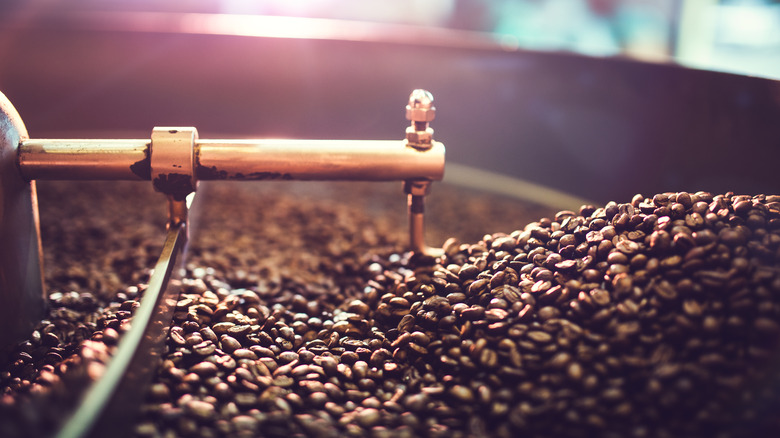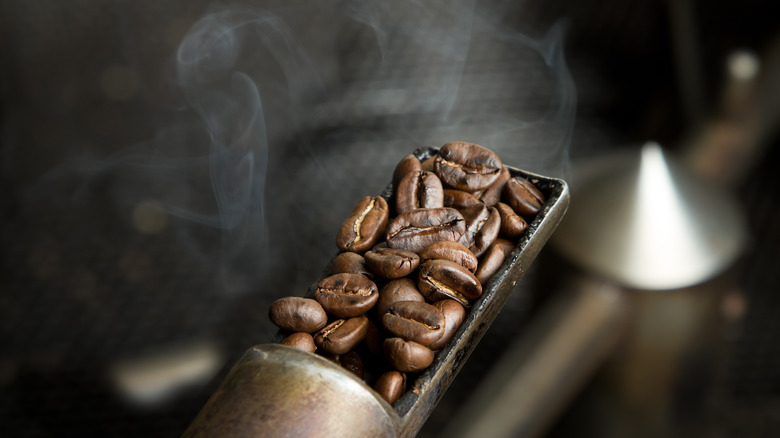Why The 'First Crack' Is A Crucial Moment In The Coffee Roasting Process
That morning cup of coffee that you enjoy relies on quite a journey. Coffee beans are grown, harvested, dried, and processed in a variety of ways before they're carefully roasted, ground, and brewed in a host of different methods. If you've ever wanted to explore coffee and understand it more deeply, roasting is perhaps the most significant part of the journey in terms of transforming the green coffee bean into the dark beverage we love so much.
Coffee roasting, at least on the surface, isn't terribly complicated. In fact, it's something you can even do at home with just a baking sheet and your oven if you don't own your own roaster. Coffee beans just need to be heated and agitated to ensure that the heat is evenly distributed. How long you roast them and how hot you get those beans determines how dark the roast is. And the first crack is a critical milestone for any coffee roaster, whether amateur or a pro.
The first crack, which is actually audible, marks a transition in the roasting process. It marks the point at which the roast can — depending on your flavor preferences — be complete.
What actually happens at first crack?
If you're roasting coffee beans and you listen closely, you'll hear an audible pop, which sounds a bit like a kernel of popcorn popping. That first crack — which is called "first" because if you continue to heat the coffee beans, you'll get a second crack — marks the point at which the coffee beans have absorbed enough heat from the roaster to convert the moisture in the bean to steam, which it releases with that audible crack.
The first crack happens around 380 degrees Fahrenheit and if you prefer your coffee roasted on the lighter side, you can stop the roasting process after you hear this. It's a milestone in coffee roasting that indicates the beans have lost their grassy, green flavors and are sufficiently roasted for making a good cup of coffee.
The second crack occurs as the temperature continues to rise and the gasses inside the coffee bean begin to escape from the bean. The sound isn't nearly as pronounced as the first one. Roasters can continue to roast beans past the second crack, but you're far more likely to end up with burned flavors as you continue to heat the coffee beans. Often there's a sweet spot between the cracks where enough roasted flavor has developed to make the beans taste pleasant when ground and brewed, but the roasting stops short of imparting burned flavors.

